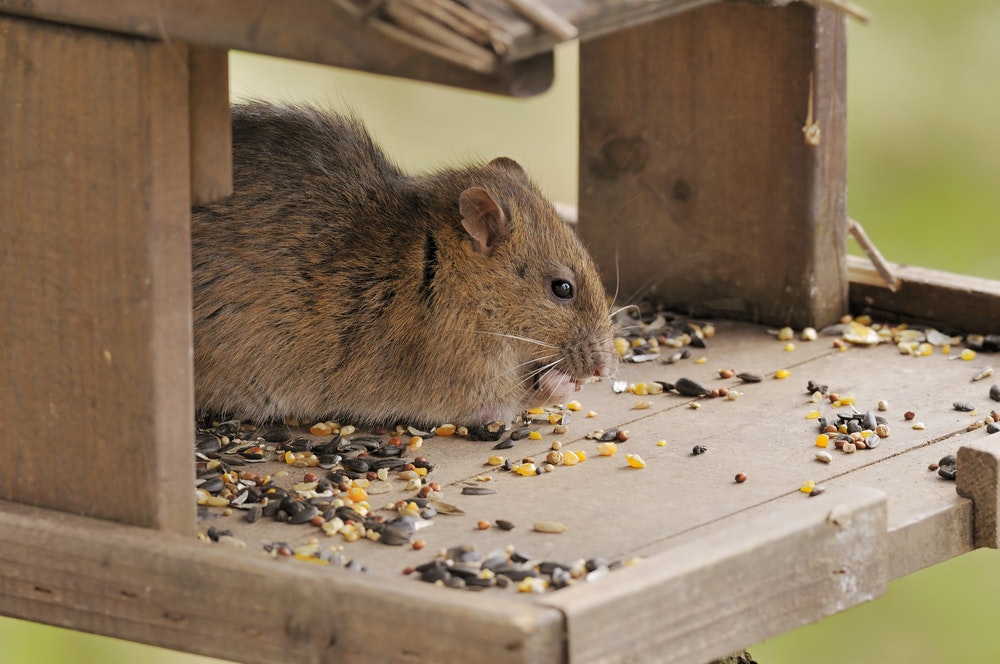Rats
There are two species of rats that commonly become a problem in and around homes in Marin and Sonoma counties: the roof rat (Rattus rattus), and the Norway rat (Rattus norvegicus). Both species have several common names (please see our Rat Brochure for a list of these names).
These two species can be differentiated by physical characteristics and habits. Adult Norway rats are typically heavier than roof rats, and have a blunt nose and relatively smaller eyes and ears. Comparatively, roof rats are of slighter build, possess a pointed nose, and have larger eyes and ears and a longer tail (proportionally).

Life cycle & habitat:
Both Norway and roof rats are capable of rearing several litters of young per year. Rats are most active at night, but may also be observed during the day, especially if the population is high and/or there is insufficient food available. Because both species have different nesting habits, a careful inspection of a residence can help determine what species is present.
- Roof rats: agile climbers that usually nest above ground in structures or in trees/dense vegetation.
- Norway rats: commonly burrow around structures, in woodpiles or rubbish and in open areas.
Impact on human health:
- Roof rats and Norway rats contaminate food and animal feed and may vector Salmonellosis, Leptospirosis and other diseases. These diseases may be contracted when food or water is contaminated with rat feces or urine and is ingested or contacted by humans.
- Rats harbor ectoparasites such as fleas and mites which may come in contact with humans and domestic animals.
Control:
- An effective rodent control program includes removal of food, water and harborage for rats, and trapping when necessary.
- Long-term control is dependent on excluding or “rat-proofing” buildings.
- Relying solely on chemical control (rodenticides) will not permanently solve a rodent infestation.
- For more information regarding rodent control and prevention view our rat brochure:
What you can do to prevent exposure:
- When an indoor rodent infestation is detected, it is important to clean up feces and urine. Please view our rat brochure for specific recommendations about rodent messes.
- If rodents are being trapped or killed with rodenticides, it is important to promptly remove and dispose of carcasses. If carcasses are not removed, flies may use the carcass as a development site, and ectoparasites such as fleas, ticks and mites may leave the carcass and search for a new host.
Useful Links
- Information about excluding, trapping and cleaning up after rodents
- Information about various diseases spread by rodents
- Integrated pest management of rats in the home and landscape
- General information regarding mites
